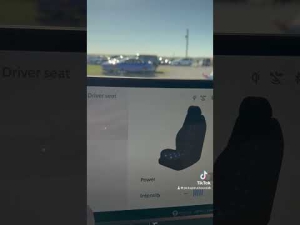How Does Artificial Intelligence Work In Cars?
Artificial intelligence is advancing in ways we previously couldn’t even imagine. Now it’s everywhere, including in our automobiles. How does artificial intelligence in cars work? What are the different ways we can use it, and what does the future of AI hold?
Artificial intelligence is used in autonomous vehicles
You’re probably familiar with autonomous and semi-autonomous driving systems like Tesla’s Autopilot feature and Full Self-Driving (FSD). Even if you don’t know a lot about it, you’ve certainly heard of it before. One of the driving forces behind autonomous and semi-autonomous driving systems like Autopilot and FSD is artificial intelligence.
Artificial intelligence uses machine learning and neural networks to both study data and algorithms to make semi-autonomous vehicles better, as well as to ‘teach’ the vehicle. AI teaches vehicle through neural networks. For example, every Tesla’s camera-based sensors send information they capture to one larger network. Then, the Tesla network as a whole learns from this information, and in turn the semi-autonomous driving systems Autopilot and Full Self-Driving become more accurate.
Waymo uses artificial intelligence in autonomous taxis
Waymo’s autonomous driving system began as a Google project. Waymo doesn’t make its own cars. Instead, it collaborates with car companies to put its driving system into vehicles.
Currently variations of Waymo semi-autonomous and autonomous driving systems are in Toyota Priuses, Lexus SUVs, Chrysler Pacifica Hybrid minivans, and Jaguar I-PACEs. In Phoenix, Arizona, Waymo has also instituted driverless taxis in the form of the Chrysler Pacifica. These fully automated minivans can be accessed via Google Maps.
Waymo uses a 360-degree perception technology which work with lidar, radar, and camera sensors to monitor all directions around the vehicle. Waymo says that by developing autonomous driving systems, they’ll be helping to save lives. Driverless cars don’t make the same mistakes that humans do. However, the technology and capabilities to put mass amounts of driverless cars on the roads is still years away.
Tesla is perhaps the most famous company to use artificial intelligence in cars
Tesla’s artificial intelligence monitoring system is entirely camera-based. Cameras monitor surroundings and also allow the vehicle to respond appropriately. Teslas use Tesla Vision, which operates on a neural network.
Tesla’s website states that, “Our per-camera networks analyze raw images to perform semantic segmentation, object detection and monocular depth estimation. Our birds-eye-view networks take video from all cameras to output the road layout, static infrastructure and 3D objects directly in the top-down view.”
While Tesla is working to improve their Autopilot and Full Self-Driving features, they are being continuously tweaked. However, they are currently far from perfect, and misuse of these features is responsible for a multitude of accidents.
As technology advances, it’s especially likely that we’ll see more and more artificial intelligence in cars. Car manufacturers and technology companies are constantly looking for ways to innovate. Nonetheless, what that means for society remains to be seen. Some of the advancements are exciting, while others make people cautious. It’s important for car manufacturers to be responsible when rolling out new technology. It’s also vital for early adopters and semi-autonomous vehicle drivers to exercise caution and safety when operating these vehicles. We’re still far from living in a world with fully autonomous vehicles everywhere, and if we rush it, people will be hurt.
RELATED: Tesla Scraps Radar, Ships Cars Without It
The post How Does Artificial Intelligence Work In Cars? appeared first on MotorBiscuit.







